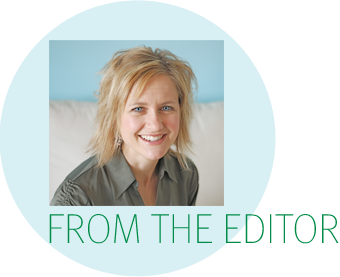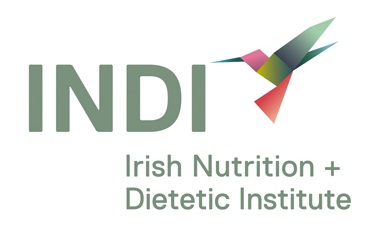PEN eNews 3(4) December 2013
PEN
® eNews is a monthly e-newsletter shared with the global PEN Community and created to help dietitians position themselves as leaders in evidence-based nutrition practice. In addition, users of the PEN System will find articles on the new evidence, resources and features available and how to maximize one's use of PEN.

Evidence-based Practice and Pseudoscience
What “counts” as evidence-based practice? Does referencing an article count as evidence-based practice? Is there a difference between arguments where evidence has been hand-picked to support their perspective, versus when evidence has been systematically examined and potential biases and conflicts are acknowledged? Do you observe “professionals” exploiting science and scientific jargon for their personal gain? With excellent communication skills, just about anyone is able to position themself as an intelligent-sounding, “evidence-based” expert. This makes a regulated health care professional’s job challenging, not to mention frustrating.
In this issue, we have reprinted a very thought-provoking article looking at the dangers of pseudoscience by Dr. Timothy Caulfield. He outlines examples of how science is used to sell products and philosophies that may be anything but scientific. This is an issue near and dear to the heart of every dietitian. We would love to hear your reactions to this article. Email us at:
eNews@pennutrition.com
In this issue, we have articles that showcase dietitians as deep-thinking, evidence-based health professionals. Dietitians as Evidence-based Myth Busters profiles dietitians using their unique skills and training to communicate evidence about wheat and health. Why Did We Choose the Name Practice-based Evidence in Nutrition® outlines the thinking that went into choosing the name for the PEN® system and database. We share a real-life example of how dietitians are collaborating to answer practice-based questions and provide client handouts in the area of cystic fibrosis in Combining the PEN® Approach and Nutrition Practice Guidelines – Why Compromise When You Can Have the Best of Both?. Your Guide to PEN® Client Handouts shows you how to access and customize PEN®’s collection of unbiased, unsponsored handouts. This and more in PEN® eNews 3(4).
As 2013 comes to a close, I wanted to share that I continue to receive great inspiration from my dietitian colleagues around the world. I see how dietitians are foraging new territories with their diverse skill set. I also see the power of national dietetic associations pooling their resources to provide thought leadership to dietitians, and to showcase a dietitian’s brand of excellence. On behalf of the PEN® team, I would like to wish you all Happy New Year. We look forward to seeing what new challenges dietitians will overcome in 2014!
Kristyn Hall MSc, RD
Editor, PEN® eNews
PEN® eNews may contain links to other external websites. PENnutrition.com is not responsible for the privacy practices or the content of such external websites. Dietitians of Canada, Dietitians Association of Australia, Dietitians New Zealand and The British Dietetic Association do not endorse the content, products or services on other websites.
What's New in PEN
Below is a quick glance at some of the new and updated content in PEN. Look for the new

and updated

symbols in PEN to see more new and enhanced content!
New Knowledge Pathways
Updated Knowledge Pathways
New Practice Questions
Updated Practice Questions
News-making Evidence
Professional Tools
Client Tools
Welcome to the Irish Nutrition and Dietetics Association!

We are pleased to welcome in the Irish Nutrition and Dietetic Association in joining the Practice-based Evidence in Nutrition
® Nutrition Community! We look forward to working with Ireland’s dietitians to expand the PEN
® system making it their “go to” resource to support evidence-based dietetic practice.
How do I...interpret the copyright and updated years on PEN® client handouts?
Written by Lisa Koo, RD PEN® Quality Assistant 
Due to the number of questions we received about the copyright year and updated years on PEN® client handouts, we made a change to provide more clarity.
The copyright year that appears on the bottom right hand corner of PEN® handouts will now coincide with the year that the handout was initially created. The updated date that is listed below the copyright year indicates when the handout was last updated.

For example, in the
Food Sources of Omega-3 Fats handout, the copyright statement listed in the bottom right hand corner says “© 2009 Dietitians of Canada. All rights reserved” followed by Updated: 2013-10-15.
The “© 2009 Dietitians of Canada” statement indicates that the handout was initially created in 2009. The “Updated: 2013-10-15” statement indicates that the handout was last updated on October 15, 2013.
This change was recently implemented so you might notice that the year on handouts you frequently use or have downloaded might look different from what you remember. In the past, the copyright year that appeared on PEN handouts listed the current year of the PEN® website (e.g. It would say “© 2012” in 2012 or “© 2013” in 2013).
We hope this helps to clarify the difference between the copyright year (i.e. when the handout was created) and the updated date (i.e. when the handout was last updated). If you still have any questions about the copyright and updated dates, feel free to contact me.
If you have any other questions or comments, please contact me at lisa.koo@dietitians.ca
Social Media Corner: The Paradoxes of Pop Science
Dr. Caulfield's article was originally published in Policy Options, http://www.irpp.org/en/po/the-age-of-man/the-paradoxes-of-pop-science/ © September 2013. It is reprinted here with permission from Policy Options.
Science and popular culture have long mixed in unique and productive ways. Cutting-edge science has inspired great novels, movies, music and art. But as science becomes a larger part of our cultural landscape, we are seeing a concomitant increase in the profoundly and paradoxically unscientific use of scientific language and images. The advocates of dubious products, philosophies and therapies frequently lean heavily on scientific-sounding terminology as a way of capitalizing on the excitement surrounding cutting-edge areas of science, including genetics, stem cells and nanotechnology.
Given that we live in an era when science has never had more of a public profile, this strategy makes tremendous sense — at least from a marketing perspective. But it is also exploitive and misleading and, in the long run, could be detrimental to both science and public trust. This is particularly so since the entities and individuals who use science to sell rarely turn the lens of scientific inquiry on the very product they are pitching.
One of the highest-profile examples of the phenomenon of simultaneously embracing (look at these cutting-edge and science-y-sounding products!) and rejecting (don’t hold us to your rigorous methodological standards!) science is the anti-aging and beauty industry. This is a massive global market that, by some estimates, will be worth over $100 billion by 2017.
Among its products are numerous anti-aging services that leverage the hype around genetics. SkinDNA — a “Wellbeing Genomics” company (whatever that is) — promises “the pursuit of youth through advanced technology” by the provision of (completely unproven) “personalized anti-aging skin treatment[s].” There is DNA shampoo that is “genetically superior” and “electrolytic” balanced. There are even companies that promise genetically targeted cosmetics that will allow for individualized skin products, a field that has the impressive-sounding label of “cosmetogenomics.”
All this is nothing more than pseudoscientific nonsense.

Not surprisingly, companies selling dubious anti-aging products also frequently exploit the profile of stem cell research, which is one of the most exciting fields of scientific inquiry, and is also one that continues to receive a large amount of coverage in the popular press. One Web site, Stem Cell Beauty Innovations, for example, encapsulates all the science-language incongruities that have become endemic in today’s media landscape. The Web site refers to the use of “pluripotent stem cells” and “transcription factors” that “revitalize” the skin and allow for “increased levels of collagen, glycoproteins, and elastic fibers in the skin’s extra cellular matrix” — all for the purpose of “de-aging” the skin.
But amidst all this science-love, the company also explicitly espouses a new-age-y philosophy that seeks to introduce unique “all-natural anti-aging products.” It is no wonder that, as the front page of the company’s Web site declares, “Simon Cowell is obsessed with Sheep Placenta Facials.”
The inconsistent and selective use of the language and images of science is most notoriously seen in the realm of complementary and alternative medicine (CAM). On the one hand, this community seems to increasingly embrace the most cutting-edge of health products, but, on the other, it continues to largely reject what science says about most complementary and alternative health treatments: that they don’t work.
Worse, it is not uncommon for CAM practitioners to explicitly reject a scientific approach to health care, suggesting that the efficacy of their approaches cannot be tested by the scientific method or that science is somehow interfering with a holistic approach to the healing process.
One of the best examples of this embrace/reject mentality is the increasing use of genetic testing by naturopaths and homeopaths. You can get, for example, “electronic homeopathy bio-energetic medicine,” a process that involves genetic testing in order to individualize the homeopathic treatment protocols. The scientific community has long rejected homeopathy and views it as little more than pseudoscientific quackery. There is not a shred of evidence that homeopathic remedies work beyond the placebo effect. Similarly, many naturopaths now offer genetic testing for everything from weight loss to “wellness plans” and, in doing so, reference studies in legitimate science journals to support the approach. Nonetheless, these same practitioners ignore research published by the same scientific community that created the adopted genetic tests that suggests most naturopathic treatments are of questionable value.
Let’s be clear: these companies and practitioners want the best of both worlds. They want the veneer of legitimacy that comes with the references to cutting-edge science, but they don’t want to be held to a scientific standard. And they don’t expect consumers to know what is meant by the skin’s “cellular matrix” or what “glycoproteins” are; they just want to create the appearance that their products and services are somehow linked to real science.
I am not, obviously, arguing that only those who fully embrace the scientific method and all its trappings and philosophical complexities can use scientific language and images. But it is profoundly disingenuous, misleading and potentially harmful to use science jargon — often in a selective and hypocritical manner — to sell products and philosophies that are anything but scientific. Sadly, the growth of this science-sells phenomenon seems unlikely to slow down anytime soon. With each new legitimate and well-publicized advance in some area of science will come new, and bogus, marketing strategies.
We can’t let these purveyors of nonsense have it both ways. There are steps we can take to combat the paradoxes of pop science: more independent and easily accessible sources of scientific information; an increased emphasis on scientific literacy within our public school systems; policing of misleading advertising; and, perhaps most important, fostering a skeptical attitude toward all scientific-sounding claims.
Good science welcomes and thrives under skeptical scrutiny. If we stick to that principle, pseudoscience and quackery will, one can hope, wither.
Written by: Dr. Timothy Caulfield
Timothy Caulfield holds the Canada Research Chair in Health Law and Policy at the University of Alberta and is the author of The Cure for Everything: Untangling the Twisted Messages about Health, Fitness and Happiness (2012).
Written by
Jayne Thirsk RD, PhD and Heather Petrie RD, MSc, Dietitians of Canada
Why did we choose the name Practice-based Evidence in Nutrition®?
We caught up with PEN’s Director and a PEN® Evidence Analyst and asked – “Why was the name PEN: Practice-based Evidence in Nutrition® chosen?” Here is what Dr. Jayne Thirsk and Heather Petrie had to say.

The choice of PEN: Practice-based Evidence in Nutrition
® was a deliberate one. We wanted to integrate the principle of basing one's practice on best evidence while ensuring that the application of evidence was informed by consideration of patients’ values, clinical experience and the practice context or circumstances that the care is being delivered in. “Practice-based” is also related to the foundational principle that PEN is practitioner-centered. The questions addressed in the knowledge pathways come from dietitians working on the front lines. PEN aims to address real issues faced in actual practice. Evidence statements in PEN consist of a summary and critical appraisal of research evidence and guidelines. However, PEN doesn’t just ask research questions, we ask practice questions. Hence, while PEN provides evidence syntheses, it also assists with the practical translation of that evidence by providing key practice points, practice guidance summaries, toolkits, client handouts (many of which are culturally adapted and translated into various languages) and professional tools and resources that are consistent with the evidence.
The PEN
® database now has a collection of guidelines, policies and handouts from a variety of different member countries. Interestingly, they are all based on the same scientific literature but all vary because they also reflect the culture and practice realities of that individual country. When we are developing a PEN
® knowledge pathway, we always try to involve both academic experts and practitioners who will be using the information. To find out more about PEN’s review process, read "
Birth of a PEN Pathway".
Dietitians are “science-using, information-sorting interpreters” (1) of situations and need to use their judgment to make informed decisions regarding the care they provide. As dietitians, we must continually revise our existing knowledge with new evidence relevant to our client, the groups in which we practice and the institutions or organizations in which we work. In the context of dietetics, I might describe this as part of the “art” of evidence-based dietetics.
- Montgomery K. How doctors think: clinical judgment and the practice of medicine. Oxford: Oxford University Press; 2006.
Written by Nicole Micallef B.Bio.Med.Sci (Hons), G.Dip.Health, M.Nut.Diet, APD/AN
Lisa Guest B.Sc (Hons), NZRD
Combining the PEN® approach and nutrition practice guidelines– Why compromise, when you can have the best of both?
Forty four Australian and New Zealand dietitians specializing in cystic fibrosis (CF) are combining the PEN® approach with the creation of nutrition practice guidelines. This makes the 2012-2015 ‘Australian and New Zealand Cystic Fibrosis Nutrition Guideline Revision Project’ unique. These dietitians have also enlisted the support of an interdisciplinary steering committee to secure the success of this ambitious project. The interdisciplinary committee is comprised of medical specialists, allied health professionals, nurses, librarians and consumers. Expected outcomes include:
- a set of online and paper based resources that provide interdisciplinary CF care teams with accessible evidence-based answers to everyday nutrition practice questions and
- corresponding consumer handouts.
How did it all begin?
In 2012, a core group of CF dietitians met to discuss how they would revise the 2006 ‘Australasian Clinical Practice Guidelines for Nutrition in Cystic Fibrosis’. This coincided with contact from Dietitians of Canada requesting Australian and New Zealand input in setting questions for a CF PEN® pathway. Extensive discussion was had around what kind of evidence-based practice guidance format would be best suited to this project. Two format options were considered:
- The PEN® approach
- Paper-based nutrition practice guidelines
 The PEN® approach
The PEN® approachThe PEN® approach was launched in Australia and New Zealand in late 2012, so it was new and exciting to the CF dietitians! Perceived benefits of this online format included:
- Succinct topic focus and use of clinical questions.
- An easily updatable evidence-based practice format.
- International dissemination of evidence-based information with systems to incorporate feedback from the international dietetics community.
- The ability to share the workload of critiquing and synthesising evidence, writing evidence summaries and grading of evidence practice points with dietitians from around the world.
The CF dietitians also had some reservations about using the PEN® approach including:
- PEN® knowledge pathways are not easily accessible by other members of the multidisciplinary CF care team.
- Writing a PEN® knowledge pathway is unchartered territory for Australian and New Zealand dietitians.
- Health care systems and climatic conditions are different across the world. These differences may impact the nutritional care that can be provided to the CF population. Concerns were raised that the international nature of the PEN® approach might dilute issues that are pertinent to Australian and New Zealand CF dietitians.
Paper-based Guidelines
Conversely, the paper-based guideline format is very familiar to the CF dietitians. Evaluation of the 2006 ‘Australasian Clinical Practice Guidelines for Nutrition in Cystic Fibrosis’ has shown increased standardization in dietetic practice and improved nutritional status for the Australian and New Zealand CF populations. Other perceived benefits of the paper-based guideline format included:
- Useful document for dietetic students and new staff as it provided background information on all topics
- Collaborative Australian and New Zealand authorship. Previous collaboration between these countries has provided opportunities for learning, sharing of expertise, mentoring and support.
- CF nutrition guidelines have been evaluated against current practice via surveys since 1998
The CF dietitians also acknowledge that the paper-based format is not ideal for the following reasons:
- It is difficult to update all sections of a guideline simultaneously.
- Format is a barrier to publication, and actual authorship may be hidden due to the acknowledgement going to the collective working group
- Dietitians Association of Australia and Dietitians New Zealand are investing organisational resources into the development of PEN® knowledge pathways rather than publishing guidelines.
A decision and progress
Discussions with enthusiastic PEN® team members in Canada (Beth Armour and Jayne Thirsk) revealed that it is possible to publish guidelines and link content to PEN®. The Australian and New Zealand CF dietitians were thrilled with this news – there was no need to compromise! After months of international discussion and a memorandum of understanding, progress on this exciting project has begun.
We are pleased to announce that in December 2013 this group will submit their first piece of PEN® content – so, keep your eyes open for the answer to this clinical question “Do appetite stimulants improve nutritional status in cystic fibrosis?”
Written by
Jane Bellman MEd, RD and Kerri Staden BSc, RD, Dietitians of Canada
Your Guide to PEN® Client Handouts
The PEN
® database has a huge
collection of its own, unbiased, unsponsored client handouts that dietitians can customize by adding their own logo and distribution information. We are excited to announce that in 2014 the handout collection will undergo a major overhaul that will make finding a particular handout much easier. Although the collections organization will change, the handouts won’t!
Some frequently asked questions on PEN® client handouts:
How do I access PEN® client handouts?
You can access handouts in four ways:
- PEN® home page
- Within a Knowledge Pathway under Related Tools and Resources. Choosing to search for consumer resources will speed up your enquiry.
- Within a Toolkit under the Nutrition Education Resources section
- Through a general search for topic to find a related handout on the PEN® home page
 How can I customize and share a PEN® client handout?
How can I customize and share a PEN® client handout?Your logo can be added to a handout and the handout can be emailed, or printed and given to a client.
Click here for more information for distributing handouts. Note that the content of a PEN
® handout cannot be changed to ensure that all information on the handout remains aligned with PEN® evidence.
Who develops the handouts?
The main handout creators are PEN® call centre partners (BC HealthLink and EatRight Ontario) and PEN® Resource Managers. The goal is to have both dietitians in the “field” and clients review the handouts for content, readability and flow.
How do handout topics get decided?
Topics can come from the call centre callers, dietitians through submit a Practice Question or Contact Us or are created when a knowledge pathway is created.
What languages and translations are available?
Most handouts are translated into French. Some handouts are also translated in Chinese, Gujarati, Hindu, Punjabi, Spanish, Urdu and Vietnamese. In addition some handouts are further culturally adapted into African and Caribbean, Chinese, Gujarati, Latin America, Hispanic, North Indian, Pakistani, South Indian, Sri Lankan, and East or South Asian.
Why are there some PEN® handouts on the Dietitians of Canada (DC) website?
Popular general healthy eating-related PEN® handouts are available to the public on the DC website. Why reinvent the wheel! These handouts have been copied onto the DC handout template, so they look different, but have the same content.
If you want to help develop, or just provide comments to current handouts, contact Jane or Kerri.
Be sure to stay tuned to What’s New in PEN in the new year for an update on the improvements to PEN® client handouts and collections.
Contact Information:
Dietitians are evidence-based myth busters
Dietitians continue to be consulted for their perspectives on issues arising in popular media. We have compiled a list of resources showcasing dietitians as evidence-based myth busters around the issue of wheat and health.
Dietitians are challenged to stay abreast of current science in food and nutrition in an ever-changing environment, ensuring their advice is grounded in the latest evidence. PEN has more than 170 Knowledge Pathways, over 1050 Practice Questions, and over 3300 Tools/Resources to help support you in whatever myths you are busting.
Are you a myth buster? Have a busted myth that you would like to share with us? Contact us at eNews@pennutrition.com
Compiled by Kristyn Hall MSc, RD, PEN eNews Editor and PEN Social Media Lead
PEN Insider
Spotlight on Celeste Hankins

Celeste Hankins APD, AN
Communications Dietitian,
Dietitians Association of Australia
This month we are featuring Celeste Hankins APD, AN, the Communications Dietitian for the Dietitians Association of Australia. My role in the PEN® Team
I investigate what Knowledge Pathways or areas of practice are topical on a global level to determine how the Dietitians Association of Australia (DAA) and its members can support fellow dietitians around the world, through knowledge transfer. This may be reviewing communications, such as editorial or media releases to blogs from Accredited Practising Dietitians (APD) or government publications. As the Communications Dietitian for DAA, I undertake media monitoring (print, online, TV and radio) for nutrition issues which relate to advocacy areas, strategic priorities and for risk management, for example, correcting nutrition misinformation. I also actively contribute content to the ‘For the Media’ and ‘For the Public’ sections of the DAA website.
I also contribute to the Global PEN® Team’s social media planning. I liaise with other members of the local Australian PEN Team to see how we can best support each other to encourage more DAA members to use PEN® and to enhance the skills of members who are already familiar with the PEN® system. It’s important to maintain open lines of communication between Professional Services and Communications and Marketing units to cultivate synergy between Toolkits and Knowledge Pathways to PEN® eNews and social media.
A day in my life investigating the evidence
Evidence analysis or sorting the wheat from the chaff, is a critical part of every dietitian’s role. In my previous work in private practice, evidence analysis would be used to form dietary advice appropriate to a client’s condition. As part of DAA’s Communications and Marketing team, I have to draw on the facts, place them in context and present them in a way that is engaging for the target audience, often the general public. When engaging with the media, this frequently needs to be done within the hour or yesterday!
Biggest learning from evidence-based practice and from taking a PEN® approach
It’s difficult to name the single ‘biggest learning’ from evidence-based practice. I believe the beauty of the PEN
® approach is the marriage between a comprehensive body of evidence and practical applications of this information. It is great to learn about new topics, or refresh existent knowledge by delving into knowledge pathways that are arranged in question and answer or
PICO format. This challenges the individual to move from theoretical knowledge to transferring and using this information to improve day-to-day practice.
What impact does evidence-based practice have on nutrition and dietetics?
With food, nutrition, diet and health affecting all people, during all life stages – there is no shortage of information or opinions on a given topic. If we profess to be the experts and leaders in this field, then it is essential that the advice we provide is substantiated by the most up-to-date evidence. People will always try to rock the boat, but it’s very hard to argue with fact. By establishing the dietetic profession as grounded in evidence-based practice, we have the ability to influence all sectors of the food chain; from government policy, to food industry, to the health system to the individual. In simplest terms, food and nutrition have a significant impact on quality of life and so dietitians need to provide sound advice.
Dietitians as leaders in evidence-based practice….
My mantra as a dietitian is ‘making the healthy choice the easy choice’. As the leaders in nutrition, we have a challenging task of using the evidence across a broad range of practice areas to change the food environment, influence decision makers and ultimately facilitate healthy decisions.
My favourite thing about PEN is…
…. the diversity of topics covered. It’s difficult for an individual to be well versed in all things nutrition, however, with an in-depth repository of dietetic knowledge at hand, things suddenly become simpler!
How to reach me…
Written by Celeste Hankins APD AN
Dietitians New Zealand Members Have Embraced PEN!
The first month of my appointment as DAA’s PEN® Translational Research Leader commenced with a flying start across the Tasman Sea to the New Zealand (NZ) Dietitians 2013 conference in Auckland. In a plenary session, a broad overview of PEN was provided highlighting PEN as one of the key membership benefits of Dietitians NZ, increasing awareness of the relevance of PEN to dietetics practice in all settings and encouraging contribution to PEN by our New Zealand colleagues. A PEN writing workshop was conducted for both experienced and novice PEN users. Leading Auckland dietitian Lisa Guest provided fabulous workshop assistance and showcased the Australian and New Zealand cystic fibrosis dietitians project and planned contribution to PEN.
Dietitians NZ members have embraced PEN with Google Analytics recently showing a dramatic increase in PEN site visits since the conference. There is currently active involvement from members of Dietitians NZ in several PEN writing teams as well as reviewing roles. We look forward to further collaboration in 2014.
Written by Judy Bauer BSc, MHlthSc, PhD, FDAA
Associate Professor, University of Queensland, Brisbane
PEN Translational Research Leader, DAA
Knowledge Transfer Events and Resources
Articles:
Researchers examined 585 trials and discovered that 32% of trials funded by industry and 18% on non-industry trials had not published results five years after they were completed. It is estimated that >250,000 people have volunteered for clinical trials, where the findings have not been shared.
Jones CW, Handler L, Crowell KE, Keil LG, Weaver MA, Platts-Mills TF. Non-publication of large randomized clinical trials: cross sectional analysis. BMJ. 2013 Oct 29;347:f6104. doi: 10.1136/bmj.f6104. Available from http://www.ncbi.nlm.nih.gov/pubmed/24169943
RCTs in an Aboriginal Context:
We've all heard about the underrepresentation of women, minorities and people of low income in many clinical trials and the impact this can have on the generalizability of the research findings. In a recent paper from the Canadian National Collaborating Centre for Aboriginal Health, they highlight the under-representation of Aboriginals in RCT investigations - referring to it as a "silent bias". The authors of this report state: "…that to remedy existing health care disparities, researchers need to develop participatory, socially relevant, and culturally safe methods for conducting RCTs within First Nations, Métis, and Inuit communities." See more at: http://www.nccah-ccnsa.ca/392/RCTs_in_an_Aboriginal_Context.nccah
Dangers of Pseudoscience
Three reasons why it is relevant to separate good science from bad science and pseudoscience. http://opinionator.blogs.nytimes.com/2013/10/10/the-dangers-of-pseudoscience/?_r=2
Videos from BDA Live:
Stories: History’s Greatest Behavioural Change Tool. Explore the power of storytelling, develop a framework for building purposeful stories, begin to craft your own leadership story. Alan Nobbs, Senior Programme Lead, Delivery and Framework, NHS Leadership Academy. http://www.xavy.com/events/bdalive
Presentations:
Social Media for Cochranites. This includes three presentations on using social media to disseminate evidence and to encourage engagement with evidence. 1) Sharing Cochrane Reviews through Twitter 2) Engaging at events through social media 3) A introduction to blogging.
thank you to our PEN® volunteers
Our global PEN® partnership has benefited from volunteer efforts around the world. Please take a moment to read and acknowledge your colleagues who have served as authors, or peer reviewers for PEN
® content since April 2013.
If you would like to be a PEN® author or reviewers, please click here to send us your contact information.
Australia 
Alan Barclay
Lisa Barker
Judy Bauer
Susan Bhadury
Sayne Dalton
Karen Fry
Kaye Foster-Powell
Natalie Latham
Sally Marchini
Judy Nation
Jane O'Shea
Aditi Patwardhan
Cindy Porter
Roxanne Portolsei
Melissa Raven
Catherine Ryan
Carmel Smart
Holly Smith
New Zealand 
Rhonda Ackroyd
Jennifer Douglas
Kate Ellison
Lynne Ferguson
Lisa Guest
Ruth Harvie
Kim Herbison
Mary McNab
Lesley Pearce
Canada 
Linda Cerullo
Carole Chatalalsingh
Margaret DeMelo
Pamela Dill
Rebecca Hanemaayer
Charlene Kennedy
Doreen Klar
Joanne Lewis
Christiana Liu
Melanie Stanton
Mary Weiland
Christine Williams-Dyjur
Cathy Wong
Zhou (Andy) Zhiping
United Kingdom 
Angeline Brookes
Zoe Connor
Dr Helen Crawley
Rachael Donnelly
Steven Hannah
Sue Kellie
Sian Lewis
Pippa Lowe
Dr Angela Madden
Dr Duane Mellor
Fiona Moor
Bella Talwar
Sarah Weston
Announcements from PEN
Practice-based Evidence in Nutrition® is Registered in Canada!
You may have noticed the ® appearing beside the PEN logo recently. We are pleased to share that earlier this year we received Canadian trade-mark registration for the Practice-based Evidence in Nutrition [PEN] logo, name and tagline. A registered trademark provides Dietitians of Canada and its partners (through our licensing agreements) exclusive rights to use the trade-mark in association with the products and services we claimed in the trade-mark registration.
What is the difference between TM and ®?
Before the trade-mark is registered, you can use the TM designation as an expression of common law rights. Such a marking does not provide any added protection for the trade-mark beyond that which may be available under common law, but it can help avoid “innocent” infringements of a trade-mark, which sometimes are the result of others not knowing proprietary rights in the trade-mark. Once the trade-mark is registered it then has the full regime of protection under the Canadian Trade-marks Act, and it should then be indicated with the symbol ®.
It is important to DC to make sure that their licensees are adequately protected for using our trade-mark. The trade-mark registration, which provides DC exclusivity to the mark in Canada, gives our licensees the peace of mind that we are pro-active in taking the necessary steps to protect their licensed rights as well.
Congratulations to the Canadian Cochrane Centre!
PEN would like to wish the Canadian Cochrane Centre a giant congratulations for being awarded the Canadian Institute of Health Research (CIHR) Knowledge Translation Award! This award was granted because of Cochrane's significant contributions to global health knowledge through the production of systematic reviews and plain language summaries. PEN was proud to have written an impact letter of support to their application.
Are you a Dietetic Educator? Maximize your in-class time by using DC on-line learning tools
Did you know that you can get group rates for DC’s Quick Sync Service (QSS) products and on-line courses when you use them to support in-class studies? Says Dr. Len Piché at Brescia College, “Since I began having my students access the QSS modules, it’s introduced a new learning tool for students to build their knowledge base on key nutrition concepts.” Internship co-ordinators and university lecturers at University of British Columbia, Manitoba Partnership Program, Ryerson’s IDPP and Acadia have found similar benefits.
Used as self-study programs, the QSSs and on-line courses are dynamic self-study learning tools that encourage students to be self-directed learners. By accessing the didactic information as assigned reading more dynamic (an sometimes more current) format than a traditional textbook, your in-class time can be focused on discussion and the application of that information as case studies or class projects.
QSSs feature PEN® Background and Toolkit content in seven (soon to be 8) common practice areas. On-line courses include in-depth information from a variety of sources – all written by subject matter experts in their field and based on the most current evidence. Courses and QSSs are constantly being updated as new information becomes available. Content is supplemented with photos, audio and video clips, quizzes and a certificate of completion that requires a minimum achievement level of 80% on the final exam, so you can be sure that students have spent the time doing the work and building their knowledge base.
On-line courses:
- Herbal Supplements
- Sports Supplements
- Vitamin and Mineral Supplements
- Critical Care Nutrition
- Dysphagia Management
- Introductions to Dietary Reference Intakes
- Applications of DRIs in Dietary Assessment
- WHO Growth Chart Training Program
- Cochrane Peer Review Training Modules
Quick Sync Services
- Bariatric Surgery
- Child Growth
- Complementary Feeding
- CVD Secondary Prevention
- Lactation
- Obesity and Dietary Supplements
- Osteoarthritis
At the same price or less than a reading package available through the university bookstore – consider using the DC tools to help you maximize precious class time.
Contact corinne.eisenbraun@dietitians.ca for more information.
Coming Next month
PEN’s Surprising Findings of 2013
Introducing the DAA PEN Advisory Committee
How do I…Customize PEN Client Handouts?
Contact Us
PEN eNews is a newsletter to help you:
- keep up-to-date on new content, features and technology available in PEN
- optimize your time spent in PEN
- enhance your skills in critically appraising the literature
- enhance your knowledge of and participation in knowledge transfer
- position yourself as a leader in evidence-based practice
To access current and archived copies of PEN eNews, go to:
http://www.pennutrition.com/enews
PEN eNews
December 2013 Volume
3 (4)
A Publication of the PEN® System Global Partners,
a collaborative partnership between International Dietetic Associations.
Learn more about PEN.
Copyright Dietitians of Canada
. All Rights Reserved.